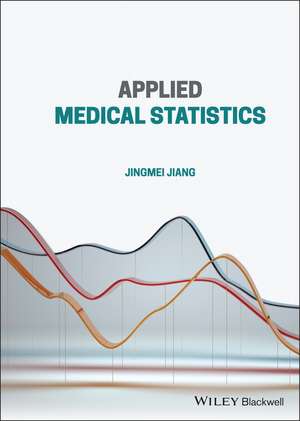Applied Medical Statistics
Autor J. Jiangen Limba Engleză Hardback – 28 apr 2022
An up-to-date exploration of foundational concepts in statistics and probability for medical students and researchers
Medical journals and researchers are increasingly recognizing the need for improved statistical rigor in medical science. In Applied Medical Statistics, renowned statistician and researcher Dr. Jingmei Jiang delivers a clear, coherent, and accessible introduction to basic statistical concepts, ideal for medical students and medical research practitioners. The book will help readers master foundational concepts in statistical analysis and assist in the development of a critical understanding of the basic rationale of statistical analysis techniques.
The distinguished author presents information without assuming the reader has a background in specialized mathematics, statistics, or probability. All of the described methods are illustrated with up-to-date examples based on real-world medical research, supplemented by exercises and case discussions to help solidify the concepts and give readers an opportunity to critically evaluate different research scenarios.
Readers will also benefit from the inclusion of:
- A thorough introduction to basic concepts in statistics, including foundational terms and definitions, location and spread of data distributions, population parameters estimation, and statistical hypothesis tests
- Explorations of commonly used statistical methods, including t-tests, analysis of variance, and linear regression
- Discussions of advanced analysis topics, including multiple linear regression and correlation, logistic regression, and survival analysis
- Substantive exercises and case discussions at the end of each chapter
Perfect for postgraduate medical students, clinicians, and medical and biomedical researchers, Applied Medical Statistics will also earn a place on the shelf of any researcher with an interest in biostatistics or applying statistical methods to their own field of research.
Preț: 872.63 lei
Preț vechi: 918.56 lei
-5% Nou
166.98€ • 178.56$ • 139.22£
Carte tipărită la comandă
Livrare economică 17 aprilie-01 mai
Specificații
ISBN-10: 1119716705
Pagini: 640
Dimensiuni: 186 x 262 x 39 mm
Greutate: 1.22 kg
Editura: Wiley
Locul publicării:Hoboken, United States
